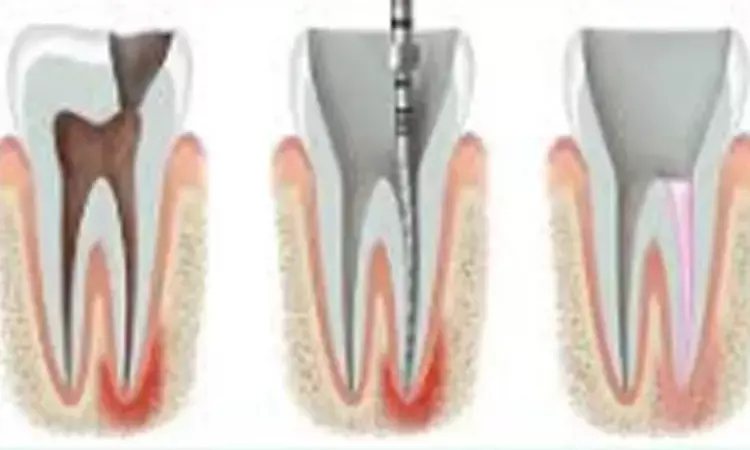- Home
- Medical news & Guidelines
- Anesthesiology
- Cardiology and CTVS
- Critical Care
- Dentistry
- Dermatology
- Diabetes and Endocrinology
- ENT
- Gastroenterology
- Medicine
- Nephrology
- Neurology
- Obstretics-Gynaecology
- Oncology
- Ophthalmology
- Orthopaedics
- Pediatrics-Neonatology
- Psychiatry
- Pulmonology
- Radiology
- Surgery
- Urology
- Laboratory Medicine
- Diet
- Nursing
- Paramedical
- Physiotherapy
- Health news
- Fact Check
- Bone Health Fact Check
- Brain Health Fact Check
- Cancer Related Fact Check
- Child Care Fact Check
- Dental and oral health fact check
- Diabetes and metabolic health fact check
- Diet and Nutrition Fact Check
- Eye and ENT Care Fact Check
- Fitness fact check
- Gut health fact check
- Heart health fact check
- Kidney health fact check
- Medical education fact check
- Men's health fact check
- Respiratory fact check
- Skin and hair care fact check
- Vaccine and Immunization fact check
- Women's health fact check
- AYUSH
- State News
- Andaman and Nicobar Islands
- Andhra Pradesh
- Arunachal Pradesh
- Assam
- Bihar
- Chandigarh
- Chattisgarh
- Dadra and Nagar Haveli
- Daman and Diu
- Delhi
- Goa
- Gujarat
- Haryana
- Himachal Pradesh
- Jammu & Kashmir
- Jharkhand
- Karnataka
- Kerala
- Ladakh
- Lakshadweep
- Madhya Pradesh
- Maharashtra
- Manipur
- Meghalaya
- Mizoram
- Nagaland
- Odisha
- Puducherry
- Punjab
- Rajasthan
- Sikkim
- Tamil Nadu
- Telangana
- Tripura
- Uttar Pradesh
- Uttrakhand
- West Bengal
- Medical Education
- Industry
Neem comparable to sodium hypochlorite as root canal irrigant for postoperative pain reduction

According to recent research, it has been found out that Neem and 2.5% NaOCl were not significantly different in terms of reducing the intensity of post-operative pain during all follow-up periods.
The study is published in the International Endodontic Journal.
N. S. Hosny and colleagues from the Department of Endodontics, Faculty of Dentistry, Cairo University, Cairo, Egypt carried out the present study with the aim to assess the effect of Neem versus 2.5% NaOCl as root canal irrigants on the intensity of post-operative pain and amount of endotoxins following root canal treatment of mandibular molars with necrotic pulps.
his parallel, prospective, double-blinded, randomized controlled trial with allocation ratio 1:1 was conducted in the out-patient clinic of the Endodontic Department, Faculty of Dentistry, Cairo University, Egypt. Fifty healthy patients with mandibular molars with necrotic pulps were randomly assigned into two equal groups using computer software.
In the intervention group, root canals were irrigated using Neem; whilst 2.5% NaOCl was used in the control group. A standard root canal treatment was performed in two visits using ProTaper Next rotary files, with no intracanal medication.
Pain intensity was assessed using a numerical rating scale (NRS) 6, 12, 24 and 48 h following instrumentation and canal filling. Endotoxin samples were collected using three paper points before and after canal instrumentation and a sandwich ELISA method was used to quantify the level of endotoxins.
Demographic, baseline, and outcome data were collected and analysed using chi-square tests (for the comparisons of categorical variables), Mann–Whitney tests (for non-normally distributed variables) and Student's t tests (for normally distributed variables), A P-value < 0.05 was considered to be statistically significant.
The results showed that –
- The mean pain scores within the two groups decreased continually over time.
- The mean pain scores in the Neem group were lower than those in the 2.5% NaOCl group at 6, 12, 24 and 48 h following instrumentation and canal filling with no significant difference between them except at 24 h following instrumentation (P = 0.012).
- Both irrigants significantly reduced endotoxin levels compared to the pre-instrumentation samples (P < 0.001) by 8% for the NaOCL group and 18% for the Neem group.
Therefore, the authors concluded that "Neem and 2.5% NaOCl were not significantly different in terms of reducing the intensity of post-operative pain during all follow-up periods except at 24 h following instrumentation where Neem was associated with lower pain intensity. Both irrigants significantly reduced endotoxin levels but were not effective in eliminating endotoxins completely from root canals of mandibular molars with necrotic pulps."
Dr. Nandita Mohan is a practicing pediatric dentist with more than 5 years of clinical work experience. Along with this, she is equally interested in keeping herself up to date about the latest developments in the field of medicine and dentistry which is the driving force for her to be in association with Medical Dialogues. She also has her name attached with many publications; both national and international. She has pursued her BDS from Rajiv Gandhi University of Health Sciences, Bangalore and later went to enter her dream specialty (MDS) in the Department of Pedodontics and Preventive Dentistry from Pt. B.D. Sharma University of Health Sciences. Through all the years of experience, her core interest in learning something new has never stopped. She can be contacted at editorial@medicaldialogues.in. Contact no. 011-43720751
Dr Kamal Kant Kohli-MBBS, DTCD- a chest specialist with more than 30 years of practice and a flair for writing clinical articles, Dr Kamal Kant Kohli joined Medical Dialogues as a Chief Editor of Medical News. Besides writing articles, as an editor, he proofreads and verifies all the medical content published on Medical Dialogues including those coming from journals, studies,medical conferences,guidelines etc. Email: drkohli@medicaldialogues.in. Contact no. 011-43720751


